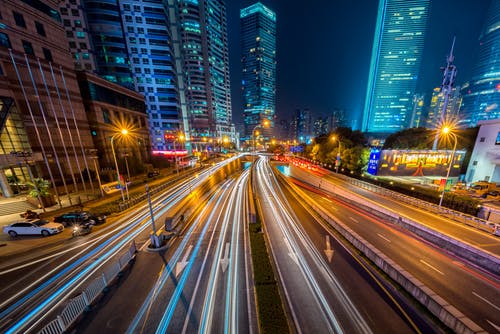Long exposure photography, a style often used in night photography, creates stunning and ethereal effects with high-resolution quality. To take long exposure shots, you mainly need a DSLR camera paired with a tripod. Most long exposure photos are taken at night using a wide-angle lens to capture sharp images. Set an aperture between f/12 and f/32 and switch your camera to manual mode to control the shutter speed and obtain sharp details.
Since long exposures are often shot at night, the resulting image typically has bright light trails against a dark sky. Use the timer and automatic shutter settings to avoid camera shake or jiggling for clearer shots.

At night, long exposures beautifully capture light trails from stars and Earth’s rotation. For a more interesting composition, include elements such as vintage trees inside the frame. Mount your camera on a tripod and set the lens focus to infinity. Using a cable release will prevent any camera shake when taking a shot, which is crucial for sharp images.
For optimal results, set your camera to bulb (“B”) mode with an aperture between f/2.6 and f/4. To minimise digital noise, fix the ISO to 100 and slow down the shutter speed. Capture light trails for at least 15 minutes within your total exposure time. Keep your camera stable on the tripod to maintain depth and focus. The longer your exposure, the more pronounced the light trails or motion lines will appear.
Basic Settings and Equipment:
- Use the basic night photography settings.
- Place your camera on a sturdy tripod.
- Use a wide-angle lens.
- Adjust aperture and focus manually.
- Slow the shutter speed according to the scene.
If worried about blurry images, use the self-timer and autofocus mode sparingly, and avoid flashlights that can degrade image quality.
A key point to master long exposure is to capture shadows and highlights correctly. The perfect balance in shadows will lead to successful long exposure shots. Keeping the shutter speed at the appropriate limit is essential to achieving the desired depth effect.
In summary, long exposure photography requires the right camera, a steady tripod, and practice. With these tools and some patience, you can capture stunning images.
Conclusion
Night long exposure photographs can be perfected through practice and learning to recognise lighting conditions and shadows at night, adjusting the camera settings to suit these conditions for beautiful, high-quality shots.

